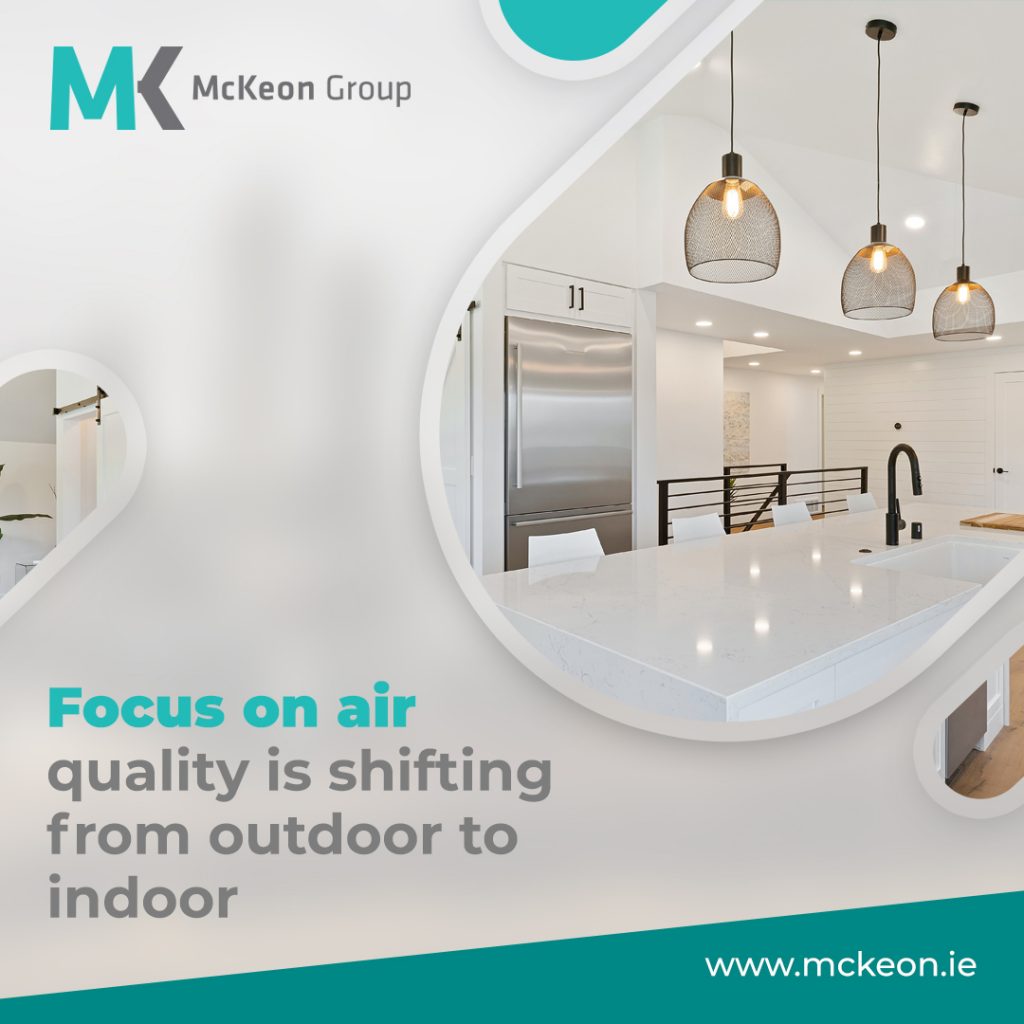Indoor Air Quality a Growing Concern
Indoor Air Quality a Growing Concern
06/08/2021
Ireland’s Proposed Workplace Ventilation Bill
Over the past 18 months, with much of the world ravaged by COVID-19, governments globally have resorted to implementing prolonged lockdowns to contain the spread of the virus. With only key workers out on our roads, many cities across the globe found a significant reduction in air pollution, with formerly smog-ridden landscapes in places like China experiencing clearer air.
In an article for The Conversation, University of York Researchers David Carslaw and Nicola Carlslaw describe how, with outdoor pollution likely to reduce over the coming decades, there now needs to be an increased focus on indoor air quality. You can read this article in full here: https://theconversation.com/amp/air-pollution-exposure-is-shifting-from-outdoor-to-indoor-heres-why-163410
Earlier this week People Before Profit launched a campaign for the Workplace Ventilation Bill, which, if passed, could force bars and schools in Irelands with poor ventilation to close. The party’s Employment Rights spokesperson, Paul Murphy, says proper ventilation standards are needed to cap the amount of CO2 allowed indoors and enable workers to request an inspection if they’re concerned about compliance. Workplaces that fail to comply with an inspector’s ‘improvement notice’ could be forced to shut. Current laws require workplaces to ensure ‘sufficient fresh air’, however, there is no clarity about what this entails. McKeon Group company https://hereworks.ie specialises in Smart Buildings (and Happy Buildings!), with an expert focus on indoor air quality. With Irish construction standards resulting in increasingly insulated and airtight homes, concerns about indoor air quality are growing.
Side-Effects of Electric Vehicle Use
The two researchers are at pains to point out that while a reduction in road traffic is good for photo opportunities comparing smog levels, other factors need to be considered regarding air pollution with far-reaching ramifications for indoor planning and facilities management.
With more and more people opting for electric vehicles and nation’s around the world setting cut-off dates for non-green vehicle production, it does appear the reign of fossil fuel is over. One of the most striking problems put forward as we move towards a greener future is that we may find an increase in respiratory problems.
While vehicles have been one of the primary sources of air pollution over past decades, this move to electric vehicles means less nitrogen oxide is being released into the atmosphere. One of the few benefits of this pollutant is that it neutralises the toxic gas, ozone, released by industrial activity. High up in our atmosphere, this gas forms a protective seal around our planet, however, unneutralised and down in our communities and urban areas, it acts as a pollutant, causing respiratory problems like asthma.
Ozone Gas Moves Indoors
The concern is that this pernicious gas moves freely from outside to inside our buildings, through our windows, open doors, and even cracks in exterior walls, bringing the problem of outdoor pollutants well and truly indoors. Corroborating this claim is a 2020 UK government report that used computer modeling to establish a 50 percent increase in indoor ozone gas during COVID-19 related lockdowns.
Worryingly, the University of York researchers explain that after finding its way indoors, ozone gas begins to react with chemicals related to indoor activity, such as household cleaning solutions. These newly emitted pollutants often pose significant risks to our health.
Indoor Air Pollution and Ventilation
Citing a report by the Royal College of Pediatrics and Child Health (RCPCH), the article explains that ozone is but one of the issues affecting indoor air quality. Common-place activities such as cooking a steak on a gas hob, for example, will release nitrogen oxide and particulates into our immediate environment, as well as the volatile organic compounds emitted from scented cleaning products and candles.
The issue is also seen as compounding, with some of these harmful compounds forming new pollutants as they react with the higher levels of indoor ozone. Also compounding the issue is the increased use of airtight seals in modern construction. While these seals afford better energy efficiency, they don’t allow harmful gases and pollutants produced by indoor activity to escape. The emphasis on adequate ventilation systems is therefore expected to increase, aside from the pandemic-induced measures.
And with many now continuing to work from home, our indoor air quality is more important than ever. Due to an increasing trend of spending time indoors, the majority of pollution we are likely to encounter in the future will come from within our own homes and workplaces.
A Complex Problem
While ventilation allows the dilution of pollutants, it offers the chance for more ozone gas to enter our buildings, meaning any proposed solutions are unlikely to be straightforward.
With long-term exposure to air pollution leading to serious health issues such as cancer and cardiovascular diseases, the need to understand the issue becomes pressing. The drive to produce clean air outside is making the issue of clean air inside a complex problem. The researchers point out that the effects of outdoor pollutants such as nitrogen oxide are relatively well understood compared to the indoor pollutants that have, so far, gone unstudied.
For expert advice in this area, contact the team at McKeon Group.
About McKeon Group
Established in 1950 and ISO certified for more than two decades, McKeon Group offers expert construction, fitout and building services. The family-run Group delivers projects, services and maintenance across a range of sectors for State, local authority, FDI and private clients. For more information, contact: www.mckeon.ie

Recent Posts
Sustainability in the Construction Sector and Tendering Process
As the world turns its attention towards sustainability and combating climate change, industries are re-evaluating...
Read ArticleThe Importance of a Multi-Skilled Facilities and Maintenance Services Team
As companies compete in today's fast-paced business climate, having a well-maintained, efficient, and safe working...
Read ArticleBuilding the Future with BIM
Explore how Building Information Modelling (BIM) is paving the construction industry's future with its comprehensive...
Read Article
